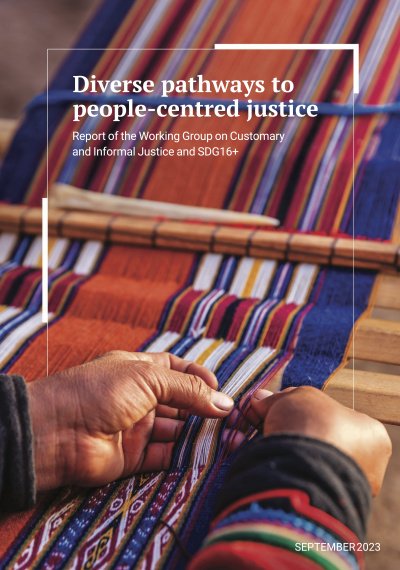
Civilian-armed group relations
The armed group-civilian dynamic is often thought of in terms of victimisation and violence. Yet these relationships are often far more complex. Civilians exert agency and power in overlooked, and often unexpected, ways.
The Centre’s work explores how armed groups influence and control civilians – and how civilians negotiate life under their control. In addition to broader work on rebel governance and armed group control, our current research also includes a partnership with ODI dedicated to examining civilian agency and relations with armed groups.
Research
-

Islands in the Storm: Civilian survival deals with the warring parties in Sudan
Based on extensive research in Darfur, this paper explores how civilians navigate between conflict parties in Sudan.
-

Time for Change: The Normalization of Corruption and Diversion in the Humanitarian Sector
This joint paper with Peacerep explores aid diversion and corruption in the humanitarian sector.
-

Resist, negotiate, submit? Civilian agency and jihadism in Central Mali
Based on extensive first person research, this report examines how communities negotiate the presence of armed jihadist groups in Central Mali.
-

Climate Adaptation in No Man's Land
This paper examines the failure the address climate adaptation in conflict areas beyond state control, and examines the potential for engaging armed groups on the environment.
-

Rapid Analysis: The Gaza Effect
This rapid analysis explores how the Israel-Hamas war is shaping armed group behavior and the prospects of engagement in the Middle East and beyond.
-

Citizens without states: implications of non-recognition for people in de facto states
This paper examines the impact of the non-recognition of de facto authorities on the people living in these territories. Arguing that the negative impacts on populations are profound, it urges for a re-think of approaches to de facto authority.
-

Diverse Pathways to People-Centred Justice
Published by IDLO on behalf of the Working Group on Customary and Informal Justice and SDG16+, of which the Centre is a member, this report highlights the need for more people-centered approaches to justice.
-

Playing the Long Game: Exploring the relationship between Al-Shabab and civilians
Based on extensive research in Al-Shabab controlled areas of Somalia, this paper explores dynamics between Al-Shabab and those who live under their control.
-

Crime and Communities: Life Under Criminal Group Control
This paper argues that we should not see ‘political’ and ‘criminal’ groups as separate categories. Instead, we should envision a spectrum of motives and practices across all armed groups, regardless of how they are labeled.
-

Understanding Agency in Civilian-Armed Group Interactions
This joint paper with ODI explores what we know (and what we don’t) about how ordinary people engage with armed groups.
-

Rethinking Armed Group Control
Prevailing understandings of control – which focus on territorial dividing lines and acts of violence – are incomplete. Our paper argues that armed group control should instead be broken down according to the ways in which armed groups seek to influence populations.
-
Taliban Attitudes and Policies towards Education
There are significant debates and differences of opinion within the Taliban on education. Based on original documents and interviews, our paper explores written Taliban policy on education, and practice on the ground.
-
Inviting Non-State Armed Groups to the Table
Like states, non-state armed groups (NSAG) are bound by international humanitarian law - but they have not been included as participants in developing those rules. This Brief proposes a strategic model aimed at the progressive inclusion of NSAGs in the development of international norms and laws.
-
Regulating Irregular Actors: Can Due Diligence Checks Mitigate the Risks of Working with Non-State and Substate Forces?
Western states have frequently worked with non-state armed groups to confront security threats, as part of global counter-terrorism operations or as de facto security providers in stabilisation contexts. But this often presents substantial risks or drawbacks. This joint paper, published with GPPi, considers how the US tried to mitigate these risks while working with militias and substate forces in Afghanistan, Syria and Iraq.
-

Rebel Rule of Law
Seizing on widespread dissatisfaction with formal justice, Taliban courts quickly settled disputes that the state and customary institutions could not. But their courts also enabled the Taliban to infiltrate new areas, softening the ground for further infiltration, and to enforce a strict set of rules on the population.



